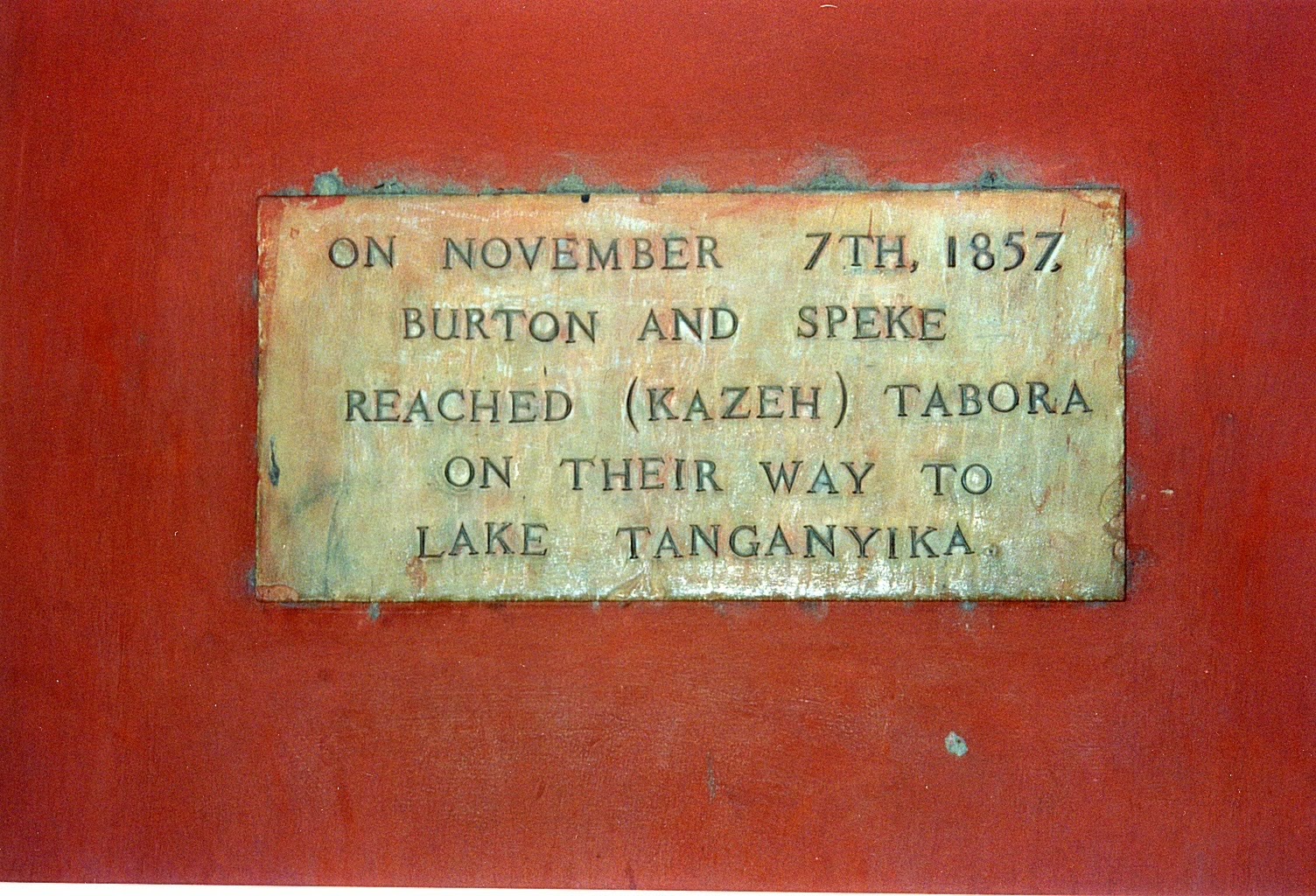ROYAL GEOGRAPHICAL SOCIETY
"The Heart of Geography"
Most people hold the Royal Geographical Society in high esteem.
The Society declares its desire is to be the world centre for Geography, supporting research, education, expeditions, field work, and promoting public engagement and informal enjoyment of our world.
These fine, brave words do indeed describe how people feel and think and talk about this noble institution.
You can imagine how honoured I was when I was permitted to study at their large research table in the relatively new library, and to be allowed to examine the two or so boxes containing letters, files and items from the Expedition commanded by Lt. Verney Lovett Cameron with Dr. William Edward Dillon as his second-in-command.
You might ask:
Where is the RGS? What happens there? Who works in there? And more . .
RGS building from one side - a lovely old red-bricked building
The Society can be found near Hyde Park and the Royal Albert Hall - two famous landmarks in London, England. Inside, there are changing displays for the public to view, and Canadians might notice across from the receptionist a sign over the doorway that reads ONDAATJE THEATRE - obviously funded by the same family as that of Michael Ondaatje, a Sri Lankan-born Canadian novelist and poet, who won the Booker Prize for his novel The English Patient.
RGS building from the front
Today, as in the past, the Royal Geographical Society funds expeditions to all Continents from the Arctic to the Equator, to the Antarctic and to the top of Mount Everest..
We have all heard of the extraordinary expeditions led by the bravest of men: Shackleton, Scott, Hillary and Dr. David Livingstone, to name a few.
Of course, we are thinking of Eastern Africa, so Dr. L is our man!
His statue stands attached to the wall on the side of the building:
And inside the building are stored artifacts from his life.
For example, here is the cap he wore:
There are plaques attached to the building, shown here:
His statue stands attached to the wall on the side of the building:
And inside the building are stored artifacts from his life.
For example, here is the cap he wore:
The Society was founded in 1830, almost 40 years before Cameron or Dillon entered its doors. Actually, the building where it was housed was a different one than that of today, and neither Cameron or Dillon would have known the current building.
But some of their artifacts are stored there, too, and some are stored privately. For example, here is a picture of the large silver inkstand carried by Cameron on all his travels. This is treasured and cared for privately:
(Here shown by special permission)
When Cameron returned home after his epic march Across Africa he gave many lectures around the country. This is a sketch drawn for The Illustrated London News depicting Cameron lecturing in the Maproom of the RGS
Notice the flags from the Expedition draped over poles on the left and far right, the man at the back trying to point out the places mentioned in the talk using a long stick to point on the giant-sized map on the wall for all to see, and that's likely the members of the Press in the front, scribbling away as fast as they can - no tape recorders or video machines back then!
Everyone is listening well, enthralled, and no-one falling asleep!
Cameron is dressed in a formal dinner jacket - very different to what he wore in Africa!
There is a Map Room in the present RGS building, and it is as large as depicted here.
On the door
On the wall
The Society was founded in 1830. Its reputation grew
steadily through the middle decades, and by 1870, when Cameron and Dillon were expressing interest in mounting an Expedition, the RGS was a fashionable scientific society.
In 1867 the British had mounted a military force of 13,000 men transported by sailing ships to Abyssinia (by the Red Sea) to rescue some diplomats and others who had been captured by the Abyssinian King. The RGS sent along a team of scientists (a botanist, a geologist, a geographer, a meteorologist and others) to accompany the soldiers.
This was a relatively new idea back then - combining Empire and Science.
Before signing off, here's a fun point:
When we were touring around Tanzania, I had brought along a tourist brochure from my hometown, where a photo competition was being organized. The competition was for "the most interesting travel photo taken which included a copy of the tourist brochure." We noticed a group of teenagers standing on a roadside, and they agreed to have their photo taken. This was the result:
(Newspaper: Alberni Valley Times, Tuesday, April 26, 2005. Page 1 )
The Tourist Brochure is being held by the 2nd teen and the 3rd teen from left.
It was only natural that I should try to repeat this success! A couple of years ago I took these 2 photos to enter into that year's newspaper competition:
Brochure on the doorknob of the RGS! Not bad!
AND
Under Dr. Livingstone's statue!
And what was the result?
They didn't offer a photo competition that year! Bah!
Welcome to readers in China this week!
Thank you all for reading along!
Next time - what would have been in Dr. Dillon's medical bag?
What would have been the instruments carried by a surgeon in the Royal Navy in the 1860s?





















































